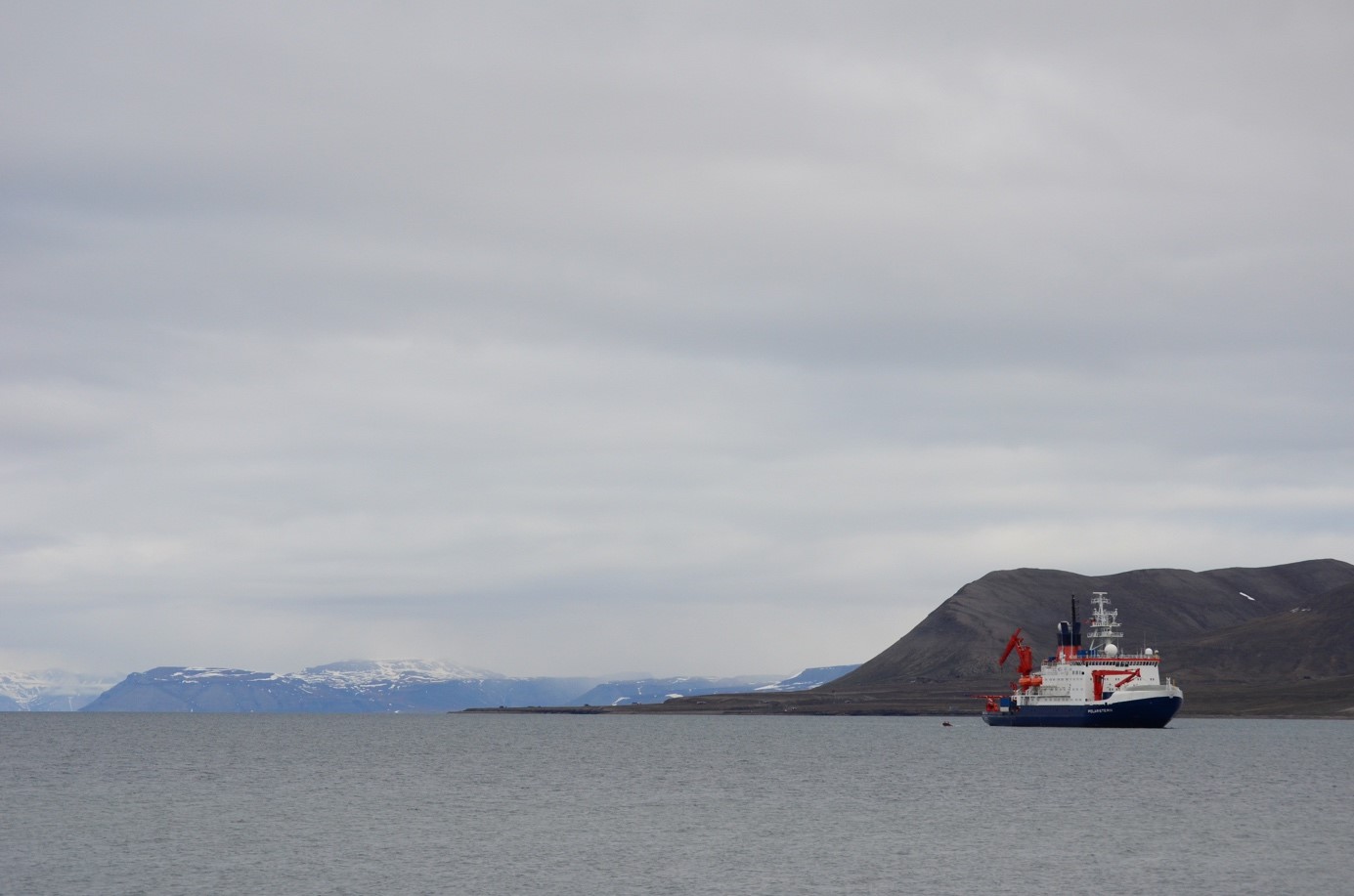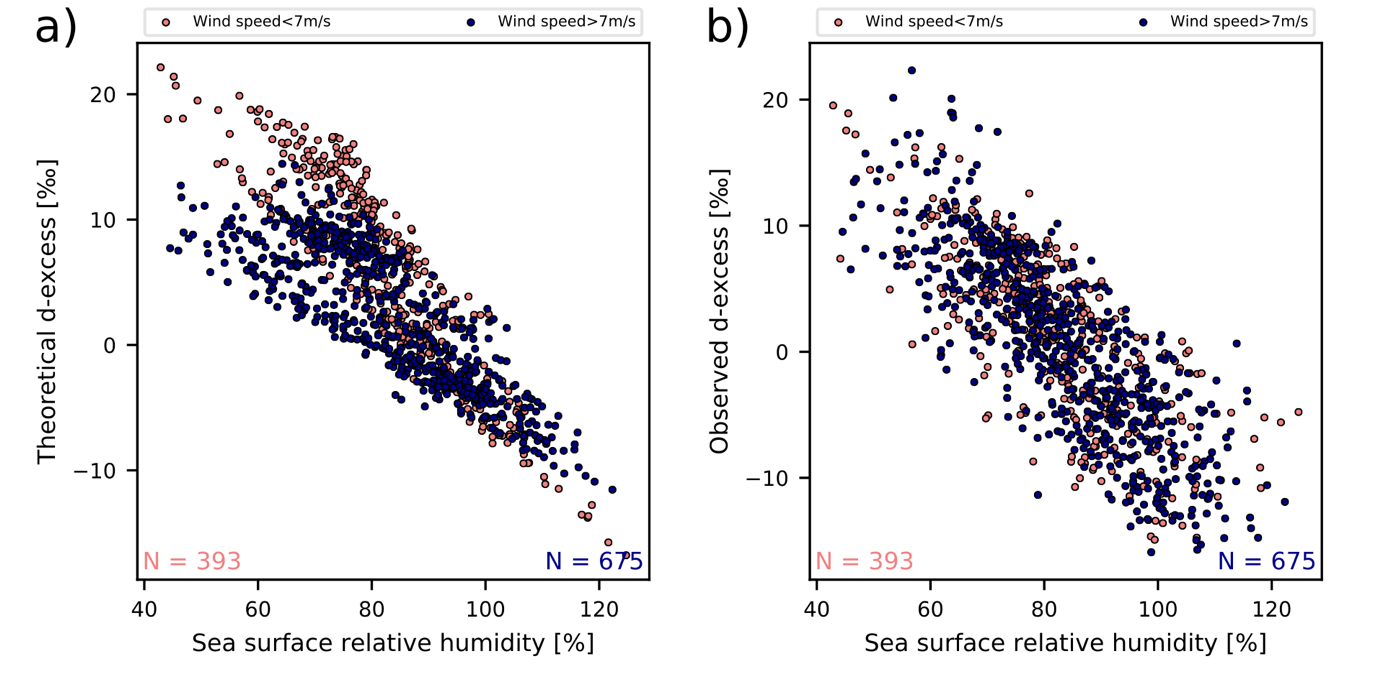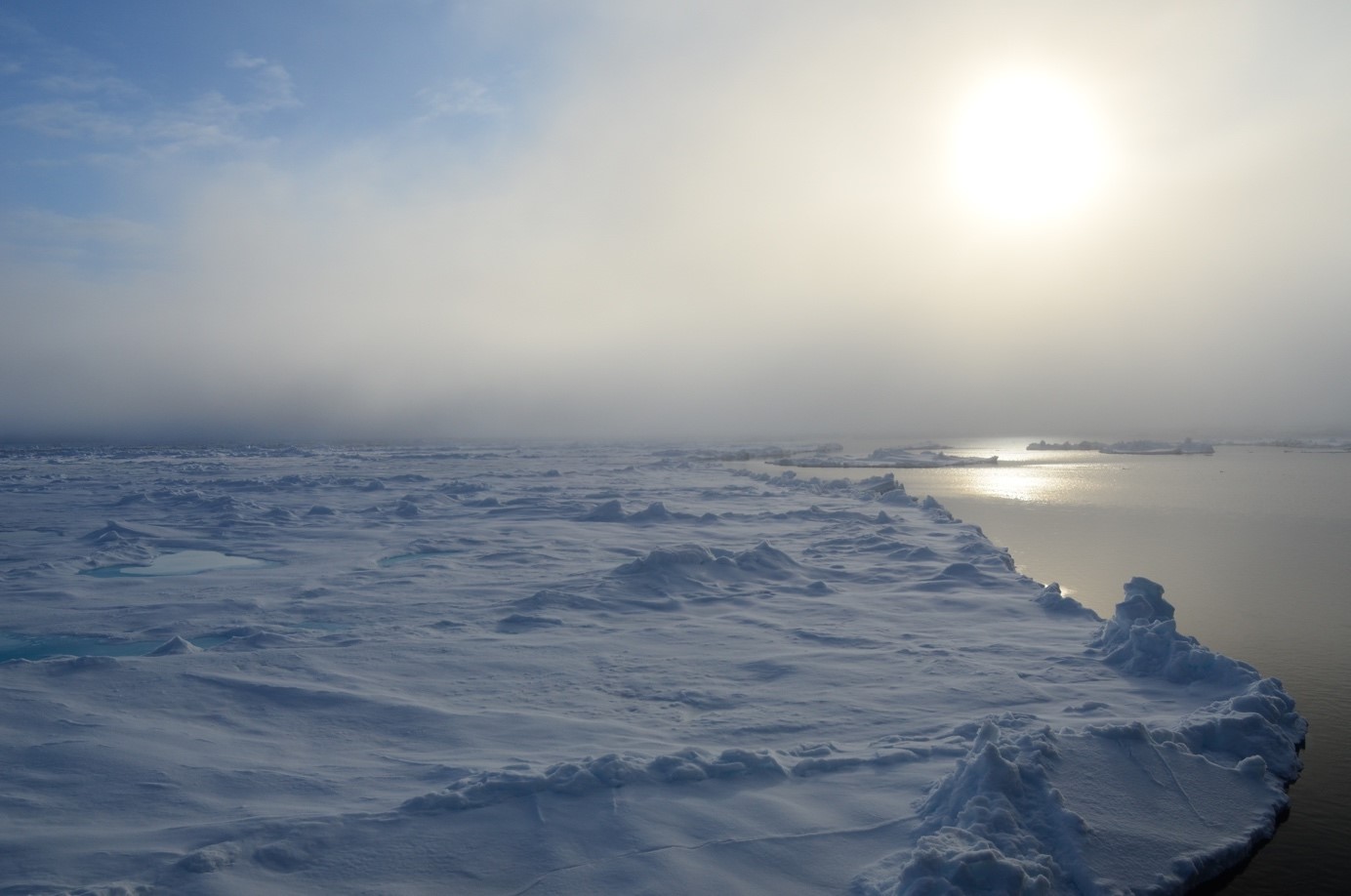在 Picarro,我们喜欢跟随在项目中使用我们分析仪的科学家和研究小组来体验 Picarro 分析仪的多样化应用场景。下面的研究带我们回顾了德国 Alfred Wegener 研究所的 Polarstern 破冰船的航行。我们谨代表 Picarro 的全体员工,感谢 Jean-Louis Bonne 博士、Melanie Behrens 博士、Hanno Meyer 博士、Sepp Kipfstuhl 博士、Benjamin Rabe 博士、Lutz Schönicke 博士、Hans Christian Steen-Larsen 博士和 Martin Werner 博士与我们分享他们的旅程。
在各种类型的“档案“中,稳定水同位素通常被用于获取有关过去气候演变的信息。从极地冰原或高海拔冰川取回的冰芯可能是最具代表性的气候“档案”类型(Jouzel,2014)。在永久冻土覆盖地区开发了基于冰楔的“新型档案“,扩大了基于水同位素的气候代用指标的空间覆盖范围(Meyer et al., 2015, 2010)。冰楔是一种常见的地冰,保存在永久冻土中,是冰体垂直叶理。在冰芯和冰楔中,有关过去温度变化的信息保存在降雪形成的冰中,其同位素组成随温度变化而变化。然而,解读这些过去的温度变化并不总是那么简单,因为温度并不是唯一会对冰的同位素组成产生影响的参数。通过观测,可以更好地了解影响水同位素组成的机制,如水分来源的变化,从而有助于对这类古气候”档案“的解读。
水同位素是了解水循环的有用工具,因为它们包含水团所经历的相变信息。在复杂的大气模型中,许多研究者使用水同位素示踪技术来完善对古气候数据的分析。同样的模型也可用于未来气候预测,在这一领域,水循环预测和降水模式变化仍然存在很大的不确定性。水同位素可作为这些模型设定基准,并促进模型的改进。

2015 年 7 月,位于斯瓦尔巴群岛朗伊尔城海湾的 Polarstern 破冰船。.
德国 Alfred Wegener 研究所的研究小组一直在关注大气水循环的第一步:海洋表面的蒸发。为了更好地了解在这一关键步骤中影响水同位素组成的过程,他们在德国研究型破冰船 Polarstern 上安装了一台 Picarro L2140-i 分析仪。自 2015 年夏季以来,这台仪器一直在海洋表面上方连续记录水汽同位素组成(δ18O 和 δ2H),覆盖大西洋区域从北极到南极洲海岸的所有纬度(图 1)。使用 δ18O 和 δ2H 值计算二阶参数过量氘,定义为 d-excess = δ2H - 8× δ18O(Dansgaard, 1964)。最新观测结果发表在《Nature Communications》期刊上,使我们能够通过实验探索大气水汽与公海以及海冰之间的相互作用。

图 1. 2015-06-29 至 2017-07-01 在 Polarstern 号上记录的水汽同位素观测位置
一个广泛引用并且已有 40 年历史的理论表明(Merlivat and Jouzel, 1979),海洋蒸发所处的气象条件会在水汽的同位素组成中留下“指纹“。我们首次在大范围气候条件下实地检验了这一理论。我们的观测结果确实证实了相对湿度和海面温度在蒸发通量同位素组成中的预期作用。然而,与这一理论的预期相反的是,我们没有观察到风速对海洋上空边界层水汽同位素组成的影响(图 2 和图 3)。在不考虑风速影响的情况下,大气模型(ECHAM5-wiso)的水同位素模拟结果与观测结果更为吻合。

图 2. 风速对水汽同位素信号 d-excess 的理论影响(考虑了 Merlivat 和 Jouzel 1979 年理论)(左图)与观测结果(右图)的比较。从理论上讲,低风速和高风速(橙色:低于 7 米/秒,蓝色:高于 7 米/秒)海面的 d-excess 与相对湿度的分布是不同的,但在实地观测中却没有发现差异。
在极地海洋的海冰覆盖区,观测结果显示 δ18O 和 δ2H 值非常贫化,大气模型无法再现。通过在模型中增加一个新的水汽源,我们找到了造成这种差异的原因。模型已经考虑了海冰升华这一水汽来源,但前提假定是海冰的同位素组成与形成海冰的海洋水同位素组成相同。然而,降雪也可能沉积在已经形成的海冰上,其同位素组成比海洋水要贫化得多。这种沉积降雪作为一种新的潜在升华水汽源被纳入模型后,极大地改变了极地地区的水汽同位素模拟,现在模拟结果与海冰覆盖地区的观测结果更加吻合(图 3)。

图 3. 同时考虑海冰顶部沉积降雪作为升华水汽源以及风速对海洋蒸发过程中的分馏没有影响(ECHAMfinal,深蓝色),与仅由海洋水形成的裸海冰和风速相关分馏(ECHAMexp,橙色)相比,可以改进同位素大气环流模式 ECHAM5-wiso模拟的水汽同位素信号(δ18O 和 d-excess)。
观测结果能够为大气水循环模型提供基准,它们强调了对模拟全球尺度水汽和降水同位素组成有重大影响的不同过程,而所有大气水循环模拟实验都应考虑这些过程。它们有助于更好地理解海洋蒸发过程中第一个水同位素信号的产生。这一点尤为重要,因为海洋蒸发将决定随后降水中的同位素信号,从而决定冰基古气候档案中的同位素信号。
这项研究的初衷是将其与在东西伯利亚(位于勒拿河三角洲的 Samoylov 站,北纬 72°22',东经 126°29')进行的类似观测结合起来,这些观测也涉及 Picarro L2140-i 水同位素分析仪。在该站获取的基于冰楔的古气候数据显示,全新世期气候变暖,这与其他北极古气候代用指标相反(Meyer et al., 2015)。由于冰楔代用指标对冬季温度敏感,而大多数常用代用指标对夏季温度敏感,因此气候演变的季节性不同受到质疑。更好地了解区域水汽源的季节性及其同位素信号将大大有助于解释这些数据。
然而,我们的记录具有较大的空间覆盖范围,因此也适用于涉及整个大西洋盆地任何纬度的水同位素研究计划。我们小组于 2017 年启动了另一项研究,在南极洲德国Neumayer-III 站(南纬 70°40´,西经 8°16´)运用 Picarro 水同位素分析仪持续开展水汽观测。将海上和冰架上记录的同位素信号结合起来,可以提供有关区域水汽来源的许多信息。
Jean-Louis Bonne原始文章:
Bonne, J.L., Behrens, M., Meyer, H., Kipfstuhl, S., Rabe, B., Schönicke, L., Steen-Larsen, H.C., Werner, M..: Resolving the controls of water vapour isotopes in the Atlantic sector, Nature Communications, doi: 10.1038/s41467-019-09242-6, 2019.
参考文献
Jean-Louis Bonne
Reference:
Dansgaard, W., 1964. Stable isotopes in precipitation. Tellus 16, 436–468. https://doi.org/10.3402/tellusa.v16i4.8993
Jouzel, J., 2014. 5.8 - Water Stable Isotopes: Atmospheric Composition and Applications in Polar Ice Core Studies, in: Holland, H.D., Turekian, K.K. (Eds.), Treatise on Geochemistry (Second Edition). Elsevier, Oxford, pp. 213–256. https://doi.org/10.1016/B978-0-08-095975-7.00408-3
Merlivat, L., Jouzel, J., 1979. Global climatic interpretation of the deuterium-oxygen 18 relationship for precipitation. Journal of Geophysical Research: Oceans 84, 5029–5033. https://doi.org/10.1029/JC084iC08p05029
Meyer, H., Opel, T., Laepple, T., Dereviagin, A.Y., Hoffmann, K., Werner, M., 2015. Long-term winter warming trend in the Siberian Arctic during the mid- to late Holocene. Nature Geosci 8, 122–125. https://doi.org/10.1038/ngeo2349
Meyer, H., Schirrmeister, L., Yoshikawa, K., Opel, T., Wetterich, S., Hubberten, H.-W., Brown, J., 2010. Permafrost evidence for severe winter cooling during the Younger Dryas in northern Alaska. Geophysical Research Letters 37. https://doi.org/10.1029/2009GL041013

在极地地区,海冰可能会被一层沉积降雪部分覆盖,这层雪随后可能会成为升华水汽的来源2015 年 7 月从 Polarstern 破冰船上拍摄的 Fram Strait 图片。

